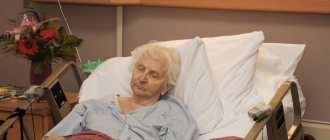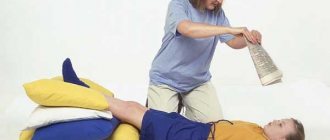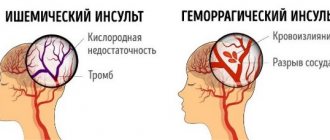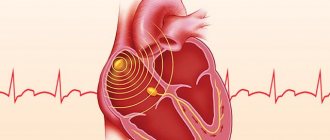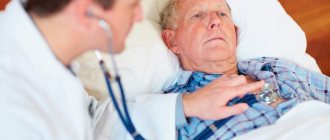Each of us at least once in our lives noticed the feeling of a lump in the throat and experienced difficulty in swallowing. When this disorder becomes permanent, it significantly impairs quality of life. Swallowing disorders, or dysphagia, can develop for a number of reasons. Most often, this problem is faced by elderly people with weak tone of the muscles of the oropharynx. There are several methods for treating dysphagia, the choice of which is determined by the etiology and severity of the disorder.
Causes of dysphagia
Dysphagia can be caused by a variety of diseases and conditions: stroke, gastroesophageal reflux disease (GERD), tumors and diabetes. In some cases, swallowing problems occur due to improperly fitted dentures or severe tooth decay. In addition, the disorder may occur as a side effect of treatment, for example during chemotherapy.
Swallowing phases
Choosing the most effective treatment plan for dysphagia depends largely on the cause of the problem and the stage at which swallowing difficulties occur. It is customary to distinguish three phases of swallowing:
- oral (oral) phase: entry of food into the oral cavity, chewing it, formation of a food bolus;
- pharyngeal (pharyngeal) phase: pushing the food bolus first into the middle and then into the lower part of the pharynx, which is accompanied by closure of the trachea, preventing aspiration of food into the respiratory tract;
- esophageal (esopharyngeal) phase: movement of the food bolus from the esophagus into the stomach.
Dysphagia Treatment Methods
Treatment of dysphagia is often based on the use of compensatory and rehabilitative approaches. Compensatory techniques do not fundamentally solve the problem, but they can compensate for the weakness of the muscles that support the act of swallowing, and thereby reduce the symptoms of the disorder. This strategy involves changing the consistency of food to make it easier to swallow and performing positional treatment maneuvers (such as rolling or tilting the head) to help push food down the esophagus.
The rehabilitation method of treatment is aimed at changing the physiology of swallowing and restoring swallowing function, thereby achieving improvement in the long term. Treatments may include exercises to build strength in the muscles of the head, mouth, larynx and esophagus, as well as teaching swallowing techniques to block the airway. Currently, as part of rehabilitation treatment, various swallowing maneuvers are used - for example, “sip over the glottis”, when the patient inhales, holds his breath and then takes a swallow.
How is diagnosis carried out and methods of working with swallowing problems after a stroke selected?
Dysphagia is diagnosed using several methods. Video fluoroscopy, fiberoptic endoscopy, ultrasound, manometry, and finger method are used. The main task of these methods is to determine at what phase of swallowing the patient has problems. Only by determining this can you solve the nutrition problem, take safety measures and work on the process of restoring the functions of all organs involved in the process. In a situation where the swallowing process is impaired after a stroke, a decision may be made to insert a probe for the first time.
This decision is made on the basis of certified screening tests that help determine whether this patient can be fed through a tube or not, since this may pose a risk of aspiration. The probe and tracheotomy tube are placed temporarily. No more than a month. Because the probe, no matter what “friendly” plastic it is made of for the human body, as a result of constant contact can form bedsores in the nasopharynx, esophagus, and cause damage to the mucous membrane. And constant irritation of the mucous membrane leads to the separation of protective secretions, which can interfere with the process of classes with a speech therapist.
The probe is placed for safety reasons and allows you to solve the power issue. If swallowing is restored, the probe is removed and the person begins to swallow on his own. Then the speech therapist, together with the nutritionist, determines exactly how to feed such a patient - use mixtures, specially crushed food, thickeners (since water is sometimes more difficult to swallow than, for example, puree).
But if swallowing has not been restored within a month, a gastrostomy tube is placed. It has a larger diameter than the probe, which allows, unlike a probe, to freely feed the patient not only with special mixtures, but also with coarser food. It is important that it is possible to clean it.
Sometimes a gastrostomy tube is placed to make swallowing exercises easier. Because doing this with a probe is much more difficult. Therefore, a gastrostomy tube can last a lifetime or as long as needed to restore the swallowing process.
Therapeutic and surgical treatment
Rehabilitation therapy is a fairly effective method of treating dysphagia. However, in cases where the disorder is caused by a chronic condition such as GERD, or is associated with a particular shape and size of the esophagus, medical treatment or even surgery may be required. Conservative treatment includes taking antacids or other medications to control the symptoms of GERD. If the cause of swallowing problems is a decrease in the level of salivation or thickening of saliva, the patient may be prescribed special medications.
If the difficulty in swallowing is caused by the diameter of the esophagus being too small or its muscle tissue being too dense, the defect is usually corrected surgically, for example, by performing laparoscopic cardiomyotomy. During the operation, the surgeon cuts the muscles of the lower esophageal sphincter to allow food to pass more freely from the esophagus into the stomach.
Treatment
Stroke with impaired swallowing in patients is a fairly common occurrence in modern medical practice. As a rule, the swallowing reflex begins to recover approximately 2 or 3 weeks after the attack. The period of complete recovery, as doctors note, is individual for each patient. Some minor disturbances may remain for a very long time.
When feeding patients with swallowing disorders, certain rules should be followed. In this case, patients should regularly perform exercises, the purpose of which is to improve swallowing function and its complete restoration.
Before carrying out any therapeutic actions, it is necessary to adequately assess the patient’s capabilities. First, it is necessary to determine whether the patient can lift and hold his head. The patient should then be asked to cough and swallow saliva. After this, the patient can be given a spoonful of water. In cases where water flows freely from the mouth and the patient does not attempt to swallow it, you should continue feeding the patient through a special tube and wait a little while trying again.
Dental care and dysphagia
Sometimes the development of dysphagia can be associated with dental problems. Missing teeth, their poor condition, or poorly chosen dentures cause insufficient chewing of food. Although oral hygiene alone will not cure dysphagia, taking good care of your teeth and gums is important to preventing and reducing swallowing problems. Brushing your teeth with a fluoride toothpaste at least twice a day will help prevent the development of caries, plaque and tartar.
Often, a whole team of medical specialists is involved in the treatment of dysphagia: dentist, speech therapist, therapist and ENT surgeon. Together, they develop the optimal treatment strategy to eliminate or alleviate any manifestations of swallowing dysfunction.
Swallowing problems after stroke
Home › Articles › Swallowing disorders after stroke
A stroke can cause difficulty swallowing called dysphagia. In this condition, there is a risk of obstruction of the esophagus and aspiration (penetration of the contents of the esophagus into the respiratory tract). To diagnose dysphagia, an examination is performed, including an X-ray examination of the esophagus. The doctor will prescribe treatment and give the necessary recommendations on what nutrition should be and how to eat.
How to eat
To make it easy to swallow without fear that food will linger in the esophagus, dishes must have a certain consistency and thickness. Thicker foods can be mixed with liquid foods, making swallowing safer. If eating by mouth is unsafe, you will need another route of nutrition. Tube feeding is often used. The doctor will discuss these questions with you and your loved ones.
Assessment of swallowing function and its disorders
Swallowing is a complex biomechanical process involving the work of various groups of muscles and cranial nerves. If any part of this complex system stops working, it can cause patients to have difficulty drinking and drinking.
Patients with stroke often have a problem with impaired swallowing - dysphagia. Dysphagia can cause aspiration, the penetration of foreign bodies into the lungs. Aspiration can cause suffocation, the development of infectious diseases of the respiratory tract, and pneumonia. Aspiration may not be noticeable (no cough). Aspiration pneumonia is the result of bacteria from the oral cavity entering the lungs.
To prevent aspiration, it is very important to maintain oral hygiene after eating and regularly clear it of food and saliva accumulation.
Some warning signs and symptoms of dysphagia:
•difficulty chewing; •poor oral hygiene; •drooling and inability to swallow saliva; •sloppy eating behavior, food falling out of the mouth while eating; •slurred speech; •coughing or clearing your throat before, during or after eating; •change in voice quality during or after swallowing (“gurgling” voice, hoarseness, temporary loss of voice); •regurgitation; • difficulty breathing, suffocation; •increased body temperature; •weight loss; •loss of interest in food, poor appetite or refusal to eat; •increasing the duration of meals; •a feeling that food or liquid is getting stuck in the throat when swallowing; •anxiety about eating or drinking.
If the patient does not have swallowing dysfunction, then he can be fed, strictly following practical feeding recommendations.
Feeding patients with impaired swallowing
Features of the patient's position that ensure the most effective and safe swallowing:
• Feeding is carried out only in a sitting position (with support under the back). • Head tilt forward. • Turn to the healthy side at the time of swallowing.
Principles of nutritional change:
• food should look appetizing; • food should be warm enough, since patients with dysphagia need a long time to eat it. If the patient does not feel warm food in his mouth, he should be fed food at room temperature; • Offer solid and liquid foods at different times. In this case, the liquid will not push solid food down the throat, and the patient will not swallow poorly chewed food or choke on liquid; • semi-hard foods are best tolerated: casserole, thick yogurt, pureed vegetables and fruits, thin porridges; • it is necessary to select the consistency of food (soft food, thick puree, liquid puree) and liquid (consistency of mousse, yogurt, thick jelly, syrup, water). It should be remembered that with thinner food or drink it is more difficult to take a safe (without aspiration) sip; • it is necessary to exclude from the diet foods that often cause aspiration (food entering the upper respiratory tract): liquids of normal consistency (water, juices, tea), bread, cookies, nuts, etc.; • when feeding, food is placed on the unaffected side of the mouth in small portions; • control over the need to use dentures is needed; a thorough inspection of the oral cavity after finishing feeding (the remaining food can be aspirated); • after feeding, the patient remains in an upright position for 45-60 minutes. • after feeding, the patient remains in an upright position for 45-60 minutes.
Need to remember:
• only a small amount of food can be given at a time; • do not give drinks with food (drinks should be given before or after food); • you cannot feed a lying person; • do not tilt the patient's head back during feeding; • teeth and dentures must be brushed at least 2 times a day to ensure the cleanliness of the oral cavity.
Care Tips
Consult your doctor about any nutritional problems that concern you. Try to create a meal plan taking into account the patient's dietary preferences.
More detailed information about the nutritional habits of a stroke patient, feeding through a nasogastric tube, as well as methods for restoring swallowing can be found in the electronic training course “Rehabilitation after a stroke at home.”
